Corolla, Duck, Kill Devil Hills, Hatteras, Nags Head, Ocracoke & More
The Outer Banks of North Carolina stands as a renowned destination, comprising a chain of barrier islands celebrated for their unspoiled beaches, historic lighthouses, and diverse wildlife. Visitors flock to enjoy activities like swimming, surfing, fishing, and exploring landmarks such as the Wright Brothers National Memorial and Cape Hatteras National Seashore. The Outer Banks is also a sanctuary for wildlife enthusiasts, offering sightings of dolphins, wild horses, and an array of bird species against a backdrop of natural beauty and historical significance.
Islands & Towns Overview:
There are 15 towns and villages that make up the Outer banks spread across 4 main islands:
- Bodie Island: Located at the northern end of the Outer Banks, Bodie Island includes Corolla, Duck, Nags Head, Kill Devil Hills, and Kitty Hawk. It is home to the iconic Bodie Island Lighthouse and offers wide beaches and family-friendly attractions.
- Hatteras Island: Stretching along the central Outer Banks, Hatteras Island includes Rodanthe, Waves, Salvo, Avon, Buxton, Frisco, and Hatteras Village. The island is famous for the Cape Hatteras National Seashore, world-class fishing, and the historic Cape Hatteras Lighthouse.
- Ocracoke Island: Located south of Hatteras Island, accessible by ferry, it features the quaint village of Ocracoke and the Ocracoke Lighthouse.
- Roanoke Island: Situated between Bodie Island and the mainland, Roanoke Island is home to Manteo and Wanchese. Visitors can explore the historic Lost Colony, waterfront parks, and cultural attractions.
- Down East, NC: A scenic stretch of coastal communities east of Beaufort, featuring small towns like Beaufort, Morehead City, Atlantic, Pine Knoll Shores, Cape Lookout, and Harkers Island. Known for its charming waterfronts, local seafood, quiet beaches, and access to Cape Lookout National Seashore and the Crystal Coast.
The Same
With over 100 miles of coastline, the Outer Banks boasts some of the most beautiful beaches on the East Coast. From the popular beach towns of Nags Head and Kitty Hawk to the serene shores of Hatteras Island and Ocracoke Island, there’s a beach for every preference, whether you’re looking for family-friendly activities, water sports, or secluded relaxation.
We have covered most of the islands but just passed through some of the smaller towns like Southern Shores, Waves and Salvo which are mainly homes (some rental homes) and very little public parking or attractions.
Outer Banks National Scenic Byway:
The Outer Banks National Scenic Byway is a picturesque route that spans over 130 miles along North Carolina’s stunning coastline. The byway begins at Whalebone Junction in Nags Head and continues through the charming coastal communities of Hatteras Island, Ocracoke Island, and Down East, culminating in Beaufort. It is one of the most beautiful bi-ways in the United States.
- Cape Hatteras National Seashore: Known for its pristine beaches, iconic lighthouses, and abundant wildlife, this area is perfect for outdoor enthusiasts.
- Pea Island National Wildlife Refuge: A haven for bird watchers and nature lovers, offering walking trails and observation platforms.
- Historic Villages: Quaint villages like Rodanthe, Buxton, and Avon offer a glimpse into the region’s maritime heritage.
- Ocracoke Island: Accessible by ferry, this island boasts charming shops, historic sites, and beautiful beaches.
- Hatteras Island: Home to the Cape Hatteras Lighthouse, the tallest brick lighthouse in the United States.
- Cedar Island Ferry: Connects travelers to the mainland, offering a scenic journey across the Pamlico Sound.
Corolla:
Known for its wild horses that roam the beaches and the historic Currituck Beach Lighthouse. Unfortunately the area where you can see the horses requires a 4-wheel drive vehicle. There are tours but neither of us have taken any so can’t recommend any specific tour. We did climb the lighthouse.
The Currituck Beach Lighthouse
The Currituck Beach Lighthouse is located in Corolla, North Carolina, on the Outer Banks. It stands 162 feet tall and is known for its distinctive black and white stripes, which provide a unique visual identity. The lighthouse was completed in 1875 and continues to be an active aid to navigation along the North Carolina coast. Visitors can climb to the top for panoramic views of the Currituck Sound and Atlantic Ocean, and explore the historic keeper’s quarters nearby to learn more about the area’s maritime history. As with most lighthouses, the 220 steps were steep but it was well worth the climb to see views of the ocean. We just purchased tickets at the door but check their website to see if advance tickets are available.
Duck:
Immerse yourself in the laid-back coastal charm of Duck, NC. We rented a beautiful house here once and it was the perfect tranquil vacation. This area of OBX always seems to be busier than the rest. During summer, expect to sit in some traffic in Duck.
- Duck Boardwalk: Stroll along the Duck Boardwalk, lined with shops and restaurants, and enjoy picturesque views of the Currituck Sound. It is pet friendly so perfect place for an evening stroll.
- Beaches: Duck is also known for its pristine beaches, perfect for swimming, sunbathing, and beach-combing. Spend leisurely days soaking up the sun and surf on the Outer Banks’ pristine beaches. The beach close to our rental did not have a lifeguard and the area tends to be rough so not ideal for really young kids. But there are some that do have life guards.
Kitty Hawk
Kitty Hawk is a classic Outer Banks destination where history and natural beauty meet. Famous as the birthplace of flight, this coastal town offers wide beaches, scenic maritime forests, and a laid-back vibe perfect for a beach getaway. Visitors can paddle through calm sound waters, or simply relax along the sandy shoreline.
- See: Kitty Hawk Woods Coastal Reserve, and scenic sound side kayaking.
- Eat: Fried Flounder sandwich from Spanky’s Grill
- Drink: Craft brews at Outer Banks Brewing Station or cocktails at Art’s Place rooftop bar.
Kitty Hawk Beach
Kitty Hawk Beach is one of my favorite spots in the Outer Banks, known for its wide, sandy shores and welcoming waters. There’s so much space to spread out, making it perfect for sunbathing and just soaking up the warmth of the sun. The gentle waves are perfect for swimming, whether I’m looking for a refreshing dip or just wading in the shallow water. I love spending time beachcombing, searching for seashells, driftwood, and other little treasures washed up along the shore. The peaceful atmosphere also makes it ideal for long strolls along the coastline. For those who enjoy outdoor activities, it’s a great spot for kite flying, paddleboarding, or snapping a few photos of the stunning ocean views. Kitty Hawk Beach truly offers something for everyone, whether I’m visiting with family or enjoying a quiet moment alone by the water.
Spanky’s Grille:
The Dinks visited this popular local spot known for its casual, laid-back atmosphere and classic American fare. The menu features a variety of comfort foods, including burgers, sandwiches, and seafood. The restaurant is praised for its friendly service, generous portions, and a welcoming environment perfect for a relaxed meal after a day of exploring the Outer Banks. This dive was the perfect stop for lunch. The catfish sandwich was huge.
Kill Devil Hills:
Kill Devil Hills sits in the heart of North Carolina’s Outer Banks, known for its wide beaches, history, and family-friendly vibe. Famous as the site of the Wright Brothers’ first powered flight, the town blends outdoor recreation with coastal charm. Visitors can enjoy surfing, kiteboarding, and relaxing on the sand while exploring historical landmarks.
- See: Wright Brothers National Memorial – the site of the first powered flight, with exhibits and scenic views.
- Eat: Local restaurants offer fresh seafood, casual dining, and beachside favorites.
- Drink: Grab a local draft at Outer Banks Brewing Station
Wright Brothers National Memorial:
Neither The DINKs nor The Family ventured into the Wright Brothers National Memorial, but both made sure to stop and visit the memorial outside. This iconic site commemorates Orville and Wilbur Wright’s historic first successful powered flight on December 17, 1903. Atop Big Kill Devil Hill stands a striking granite monument, serving as a tribute to the brothers’ groundbreaking achievement. Visitors can also view replicas of the Wright Flyer and explore exhibits that showcase the Wrights’ remarkable contributions to aviation history, offering a glimpse into the early days of flight and the profound impact the brothers had on the world.
Outerbanks Brewing Station
One of my favorite spots in Kill Devil Hills is the Outer Banks Brewing Station, a unique brewpub that stands out not just for its locally brewed beers, but also for its impressive distinction as the first wind-powered brewery in the United States. The atmosphere here is fantastic, with an extensive outdoor area where I’ve spent many evenings enjoying a cold pint while taking in the fresh coastal air. The kids love the pirate ship playground, which gives them plenty to do while I relax with a drink. As the sun sets, the brewery comes alive with live performances on their stage, adding a fun, lively vibe to the experience. Whether I’m there for the innovative beers, the great food, or simply to unwind with the whole family, it’s always a memorable stop during our visits to the Outer Banks.
Nags Head:
Nags Head is a classic Outer Banks beach town where big dunes meet wide, breezy shores. It mixes old-school coastal charm with plenty of adventure, from climbing Jockey’s Ridge State Park to fishing at Jennette’s Pier.
For families, it’s all about easy access to beautiful beaches, family-friendly activities like beachcombing, and visits to iconic spots like Jennette’s Pier and the Bodie Island Lighthouse. Kids can enjoy playing in the sand, while parents unwind in the peaceful surroundings.
For the DINKs, Nags Head offers a more laid-back pace with opportunities for adventure, such as hiking up the dunes at Jockey’s Ridge. Whether you’re enjoying quiet moments by the shore or seeking an adrenaline rush, Nags Head provides the perfect balance of activities for both families and couples.
- See – Explore Jockey’s Ridge State Park for towering sand dunes, walk historic Jennette’s Pier, and climb Bodie Island Lighthouse for sweeping ocean views.
- Eat – Hatteras chowder from Red Drum
- Drink – Sip craft beers at Lost Colony Brewery.
Jockey’s Ridge State Park:
Embark on a thrilling climb to the summit of Jockey’s Ridge, where the view is nothing short of spectacular. From the top, you’ll be treated to panoramic vistas of the surrounding landscape: the sparkling Atlantic Ocean to the east, the Roanoke Sound to the west, and miles of pristine coastline and natural beauty in between. The sensation of standing atop one of the tallest natural sand dunes in the U.S. is unforgettable, and it provides a sense of awe as you take in the expansive views.
For those looking to add an element of excitement to their visit, Jockey’s Ridge offers a range of adventurous activities. Try your hand at hang gliding, a thrilling experience that allows you to soar above the dunes and catch the winds that make this park famous for gliding. Alternatively, you can take on sandboarding, where you’ll race down the dunes on a board, feeling the thrill as you speed down the slopes. It’s an exhilarating activity that will get your heart pumping as you navigate the sandy terrain. (None of which we did. The Hike alone was exhausting.)
Jennette’s Pier
As we stroll along the pier, we capture breathtaking views and take in the serene coastal ambiance that surrounds us. Jennette’s Pier, originally constructed in the 1930s as a dance pavilion, has a rich history that speaks to the town’s charm. Over the years, the pier evolved, becoming a popular fishing destination that attracted both locals and visitors.
In its long history, it has endured significant damage from hurricanes, but the community’s resilience led to extensive renovations, transforming it into the stunning structure we see today. Now, it stands as a modern pier that offers not only fantastic fishing opportunities but also incredible panoramic views of the Atlantic Ocean. The vibrant blues of the water and the sound of the waves crashing below make it a perfect spot for capturing unforgettable photos and soaking in the natural beauty of the Outer Banks.
Nags Head Beach:
Nags Head boasts some of the most beautiful and accessible beaches in the Outer Banks, making it an ideal destination for beach lovers. The expansive sandy shores stretch for miles along the Atlantic coastline, providing plenty of room for visitors to enjoy sunbathing, swimming, and beachcombing at their leisure. Whether you’re looking for a peaceful spot to relax or a lively area to join in on water activities, there’s something for everyone.
Many of these beach access points are equipped with lifeguards, ensuring a safe environment for swimming and playing in the water. Convenient parking is available near the beach entrances, making it easy to spend an entire day by the ocean without the hassle of searching for a spot.
Bodie Island Lighthouse:
This historic lighthouse, originally built in 1872, stands as a symbol of maritime heritage and offers panoramic views of the surrounding area from its observation deck. To climb it, you must call to make reservations the morning of.
Red Drum Grill & Tap
The Dinks enjoyed dinner from here one evening. The blackened tuna sandwich features a perfectly seasoned, seared tuna steak nestled in a soft bun, delivering a burst of savory and spicy flavors. Paired with it, Hatteras chowder is a regional specialty that combines tender seafood with a creamy, broth-based base, offering a rich and comforting taste of the Outer Banks.
Hatteras:
Hatteras Island is a 48-mile stretch of wide beaches, wild beauty, and deep maritime history in North Carolina’s Outer Banks. Once home to the Hatteras Indians and a key stop for early explorers, it later became vital for ship navigation—marked by the famous black-and-white Cape Hatteras Lighthouse.
Today this barrier island blends laid-back coastal life with adventure. Visitors come for world-class fishing, surfing, and kiteboarding, plus charming small towns and endless ocean views.
We both visited Hatteras Island as part of broader Outer Banks trips, but our experiences were very different. The Family enjoyed a quick beach day, while the DINKs had time to ferry in from Ocracoke and explore multiple towns, historic sites, and local gems. Whether you’re planning a brief stop or a multi-day escape, Hatteras Island is rich in both recreation and reflection
- See: Explore Cape Hatteras National Seashore’s pristine beaches, climb the iconic Cape Hatteras Lighthouse, and visit the Graveyard of the Atlantic Museum for shipwreck history.
- Eat: Enjoy fresh local seafood at waterfront spots like Hatteras Sol Waterside Grill or Breakwater Restaurant, known for daily catches and coastal flavors.
- Drink: Sip craft cocktails and island-inspired drinks at venues such as The Wreck Tiki Bar or Hatteras Island Ocean Center events.
Hatteras Village Beach
Located near the heart of Hatteras Village, this beach is popular for its convenience and family-friendly atmosphere. It’s a great spot for swimming, sunbathing, and beachcombing. The nearby amenities, including restaurants and shops, make it easy to enjoy a full day by the sea. This was the Family’s one stop on Hatteras Island as they were beach hopping along the entire Outer Banks.
Ferry between Hatteras and Ocracoke Island
The ferry from Hatteras to Ocracoke Island is a popular and scenic way to travel between these two Outer Banks destinations. The ferry service is operated by the North Carolina Ferry System, which provides regular and reliable transportation across the Pamlico Sound.
- Duration: The ferry ride typically takes about 70 minutes, offering passengers a leisurely journey with beautiful views of the sound and surrounding waters.
- Schedule: The ferry runs multiple times a day, with frequent departures, especially during the peak summer season. It’s a good idea to check the schedule in advance as times can vary depending on the time of year and weather conditions.
- Reservations: While reservations are not required for most trips, it’s highly recommended to make them, especially during busy periods, to ensure you secure a spot for your vehicle and passengers. Reservations can be made online through the North Carolina Ferry System’s website.
- Boarding: The ferry departs from the Hatteras Island terminal located in Hatteras Village. Vehicles and passengers board directly from the terminal. It’s advisable to arrive at least 30 minutes before your scheduled departure to ensure a smooth boarding process.
Cape Hatteras Lighthouse – Buxton
The Cape Hatteras Lighthouse, an iconic symbol of the Outer Banks, has been guiding sailors since its establishment in 1803. Located on Hatteras Island, the lighthouse was constructed to address the frequent shipwrecks along the perilous Cape Hatteras, known for its hazardous shoals and shifting sands. Originally a smaller structure, the lighthouse was rebuilt in 1870 with its current 200-foot-tall design, featuring distinctive black and white stripes that make it one of the most recognizable lighthouses in the United States. Its innovative design and powerful beacon have been crucial in ensuring maritime safety through the centuries.
A visit to the Cape Hatteras Lighthouse offers both historical insight and breathtaking views. The lighthouse is part of the Cape Hatteras National Seashore, where visitors can explore its history through interactive exhibits at the nearby visitor center. Climbing the lighthouse is a highlight; the spiral staircase consists of 257 steps, leading to a panoramic observation deck. From this vantage point, you can enjoy sweeping views of the Outer Banks and the surrounding Atlantic Ocean. Unfortunately when we visited, it was closed for renovation so we were unable to go up it.
The lighthouse grounds are perfect for a leisurely stroll, with paths leading to a picturesque beach and a small museum detailing the lighthouse’s history and the area’s maritime heritage. The site is also a great spot for photography, especially during the early morning or late afternoon when the light casts beautiful hues over the landscape.
Rodanthe
Rodanthe, NC, is a picturesque coastal village on Hatteras Island, part of the Outer Banks. Known for its serene beaches and stunning ocean views, Rodanthe offers a relaxed, small-town atmosphere that attracts visitors seeking a tranquil retreat. The village is renowned for its iconic “Mirlo Beach” house, featured in the film Nights in Rodanthe, and its charming, unspoiled shoreline makes it a favorite spot for beachcombing, fishing, and water sports. With its welcoming ambiance and natural beauty, Rodanthe stands out as a serene getaway in the heart of the Outer Banks.
- See: Stroll the peaceful Rodanthe Pier for fishing and sunrise views, or visit the historic Chicamacomico Life-Saving Station to learn about the island’s rescue heritage.
- Eat: Grab fresh seafood and coastal comfort food at local favorites like Lisa’s Pizzeria or Good Winds Restaurant.
- Drink: Sip craft brews or a sunset cocktail at Good Winds Bar & Restaurant, known for its panoramic sound views.
Inn At Rodanthe:
The Inn at Rodanthe gained widespread fame thanks to its central role in the novel Nights in Rodanthe by Nicholas Sparks, as well as its adaptation into a popular film. Nestled on the serene shores of Rodanthe, Hatteras Island, the inn is known for its stunning oceanfront views and classic coastal charm. The film’s portrayal of the inn showcased its romantic and picturesque setting, attracting fans from around the world. After facing threats from erosion and storms, the iconic house was relocated further inland to preserve its legacy. Today, it remains a symbol of love and renewal, continuing to captivate visitors with its unique charm and breathtaking location.
Chicamacomico Life-Saving Station Historic Site:
One of the most significant and well-preserved life-saving stations in the United States. Established in 1874, it was part of the U.S. Life-Saving Service, the precursor to the modern Coast Guard, and played a crucial role in rescuing shipwrecked sailors along the treacherous Outer Banks. Today, the site consists of several restored buildings, including the original station house and a later one built in 1911. Visitors can explore these structures, view artifacts, and learn about the brave “surfmen” who conducted daring rescues in dangerous conditions. The museum offers a fascinating glimpse into the early days of coastal rescue operations, showcasing the station’s rich history and the many heroic missions carried out over the years. Chicamacomico stands as a tribute to the men who risked their lives to save others and remains a must-see for those interested in maritime history.
Avon
Avon Beach, located in the heart of Hatteras Island, is a beloved destination for both locals and visitors seeking a quintessential Outer Banks experience. With its wide, sandy shores and consistent waves, it’s perfect for sunbathing, swimming, and surfing. Avon also caters to anglers with its nearby fishing pier and ample opportunities for surf fishing. The village of Avon offers convenient amenities like shops, restaurants, and rental services, making it an ideal spot for both relaxing beach days and outdoor adventures.
- See: Walk the scenic Avon Fishing Pier for ocean views and great angling, or relax on wide, uncrowded beaches perfect for shelling and kite flying.
- Eat: Enjoy fresh local seafood and coastal favorites at spots like Ketch 55 or Pangea Tavern.
- Drink: Sample craft beers and cocktails at Pangea Tavern’s laid-back outdoor bar.
Avon Beach
Wide, soft sands and gentle Atlantic waves make it perfect for swimming, sunbathing, and long walks by the water. The beach stays uncrowded, so you can spread out, hunt for seashells, or fly a kite without the bustle of bigger Outer Banks spots. With easy public access and stunning sunrise views, Avon Beach offers a laid-back coastal escape for families, couples, and anyone craving a quiet stretch of shoreline.
The DINKs
Living in North Carolina for roughly 20 years you think we would frequently make it to the Outer Banks. Unfortunately given the location respective to Charlotte, it was much farther than a lot of the other NC beaches. Even though we haven’t visited as often as we would like, we have covered most of it across the several trips we have made. In addition to the shared experiences mentioned above we highly recommend:
Ocracoke Island:
Accessible only by ferry, Ocracoke offers secluded beaches, a quaint village, and historic sites like the Ocracoke Lighthouse and Fort Ocracoke. The Ocracoke Lighthouse has scenic views of the village and Pamlico Sound.
Lifeguard Beach/Ocracoke Beach
A pet-friendly paradise known for its pristine sands and tranquil waters. This secluded stretch of coastline offers opportunities for swimming, sunbathing, and beachcombing.
Pony Pen:
A brief stop at the Pony Pen on Ocracoke Island allows us to see the legendary Banker ponies, descendants of Spanish Mustangs that have roamed the island for centuries. (This one doesn’t require 4 wheel drive.)
Springer Point Trail
Springer Point Trail is a hidden gem on Ocracoke Island, offering a serene escape into nature. This picturesque trail winds through lush maritime forest, featuring ancient live oaks draped with Spanish moss and diverse plant life. The trail leads to the sound side of the island, providing stunning views of the Pamlico Sound and Teach’s Hole, a reputed hideout of the infamous pirate Blackbeard. The trail is relatively short and accessible, making it an ideal outing for nature lovers and those looking to experience the natural charm of Ocracoke Island.
Bars & Restaurants:
The island boasts a vibrant dining scene, with restaurants and bars offering a mix of fresh seafood, local flavors, and refreshing brews. Here’s a guide to some of the best spots you shouldn’t miss.
- 1718 Brewery: Named after the year Blackbeard the pirate met his end near Ocracoke, 1718 Brewery is a must-visit for craft beer lovers. This local brewery offers a variety of handcrafted beers, from refreshing lagers to hoppy IPAs and rich stouts. The brewery’s relaxed atmosphere and friendly staff make it a perfect spot to unwind after a day of exploring the island. We enjoyed their outdoor patio with our pup.
- Eduardo’s: Eduardo’s is a beloved food truck that has made a name for itself on Ocracoke Island. Serving up authentic Mexican cuisine with a local twist, Eduardo’s is famous for its fresh fish tacos, burritos, and quesadillas. The flavors are vibrant, the ingredients are fresh, and the portions are generous. We have heard that people take the ferry over to the island just to eat at Eduardo’s. While that may be extreme, it was pretty good.
Getting there – The Ferry:
There are three ferry routes We have taken two: the Hatteras-Ocracoke and the Cedar-Island Ferry. For the most accurate and up-to-date information, always refer to the North Carolina Ferry System’s official resources. But here’s some key information about the Ocracoke ferry:
- All Ferries: For all ferries, it is recommended to arrive at least 30 minutes to an hour before the scheduled departure time. Ferry schedules can be affected by weather conditions, so it’s advisable to check for updates on the day of travel. Pets are usually allowed on the ferries but must remain in vehicles or be on a leash if outside.
- Hatteras-Ocracoke Ferry: This is a free ferry that runs between Hatteras Island and Ocracoke Island and takes approximately 1 hour.. Operates frequently throughout the day, with trips approximately every 30 minutes during peak seasons. The schedule varies in the off-season. No reservations required; first-come, first-served.
- Cedar Island-Ocracoke Ferry: A toll ferry that connects Cedar Island to Ocracoke and takes around 2 hours and 15 minutes.. At the time of this posting, the toll was $15 for a car. Reservations are highly recommended, especially during peak seasons. Reservations can be made online or by phone.
- Swan Quarter-Ocracoke Ferry: Another toll ferry that runs between Swan Quarter and Ocracoke takes roughly 2 hours and 40 minutes. Reservations are highly recommended, especially during peak seasons. Reservations can be made online or by phone.
Roanoke Island:
I was surprise to see that Roanoke Island is actually apart of the Outer Banks. Rich in history, home to the town of Manteo, the Lost Colony outdoor drama, and the Elizabethan Gardens.
Historic Downtown Manteo:
The town’s quaint downtown area is lined with charming shops, restaurants, and galleries. Visitors can stroll along the waterfront, visit the Roanoke Marshes Lighthouse, and enjoy the scenic views of Shallowbag Bay.
- The Roanoke Marshes Lighthouse is a replica of the original 1877 screw-pile lighthouse that guided mariners through the Croatan Sound. Completed in 2004, the replica honors the region’s maritime history with exhibits detailing the original structure, screw-pile lighthouse design, and local maritime heritage. Situated on a pier in Shallowbag Bay, the lighthouse offers picturesque views and serves as a charming cultural landmark for visitors exploring the Outer Banks.
- The Manteo Weather Tower is a historic landmark located in downtown Manteo, North Carolina. Originally constructed to provide maritime weather information to the local community and passing ships, the tower now stands as a symbol of the town’s rich nautical heritage. Visitors to Manteo can view the weather tower and explore its history as part of the town’s charming waterfront area, which also features shops, restaurants, and scenic views of Shallowbag Bay.
Fort Raleigh:
Fort Raleigh National Historic Site preserves the history and cultural heritage of the first English attempts to colonize the New World. This site is most famous for its association with the mysterious Lost Colony and the Freedmen’s Colony established during the Civil War.Visitors to Fort Raleigh National Historic Site can explore reconstructed earthen fortifications, view exhibits at the visitor center, and attend interpretive programs that bring the rich history of the site to life. The site also includes the Waterside Theatre, where the outdoor drama “The Lost Colony” is performed, retelling the story of the first English settlers in America.
- The Lost Colony: In 1587, Sir Walter Raleigh sponsored an expedition led by John White to establish a permanent English settlement on Roanoke Island. The group of 117 men, women, and children is known as the Lost Colony. John White returned to England for supplies, but due to various delays, he did not return until 1590. Upon his return, he found the settlement abandoned with no trace of the colonists, except for the word “CROATOAN” carved into a post and “CRO” carved into a tree. The fate of the Lost Colony remains one of America’s oldest and most intriguing mysteries.
- The Freedmen’s Colony: During the Civil War, Roanoke Island became a haven for formerly enslaved African Americans seeking refuge and freedom. In 1862, the Union Army established the Freedmen’s Colony on the island, providing a community for those who had escaped slavery. The colony included homes, schools, and churches, and its residents contributed to the Union war effort by working as laborers and soldiers. The Freedmen’s Colony is a significant chapter in the history of African American emancipation and community building during the Civil War.
Bars & Restaurants:
- The Outer Banks Distilling, known for producing handcrafted spirits using local ingredients, offering tours and tastings that showcase the art of distillation. We enjoyed a tasting that included three rums, honey, molasses as well as candied pecans then headed to the bar for some craft cocktails.
- Lost Colony Brewing Company provides another taste of local flavor, with a range of craft beers brewed on-site and a welcoming taproom atmosphere. We decided to grab some diner here as well as a few of their craft beers. We enjoyed both.
National Wildlife Refuge Welcome Center:
The National Wildlife Refuge Welcome Center, often situated at the entrance of a wildlife refuge, serves as a key hub for visitors. It provides information about the refuge’s natural environment, wildlife, and recreational opportunities. Visitors can find maps, educational exhibits, and details on guided tours, wildlife viewing areas, and hiking trails. The center features interactive displays, educational programs, and a gift shop with nature-themed merchandise. Its goal is to enhance visitor experience by offering insights into conservation efforts and the refuge’s unique ecosystem.
- Short Films: They have a couple films on conservation efforts as well as one on Buffalo city which is what we watched. Buffalo City, once a bustling logging town, saw its economy shift with the decline of the timber industry and a brief period of bootlegging. Today, it has transformed into a nature preserve, preserving its historical roots while offering visitors a glimpse into its past through natural beauty and recreational opportunities. The video wasn’t the best but the information in it was interesting.
The Alligator River National Wildlife Refuge
While not on the Outer Banks, The Alligator River National Wildlife Refuge is owned for its diverse habitats and unique wildlife. Spanning over 152,000 acres on the Outer Banks, it protects a wide array of ecosystems, including wetlands, forests, and open waters.
The refuge is particularly notable for its population of black bears which is the highest concentration in the entire US. It also serves as a crucial habitat for the endangered red wolf, with efforts ongoing to reintroduce and conserve this species. Visitors to the refuge can explore various hiking trails, participate in wildlife viewing, and enjoy educational programs that highlight the area’s natural and cultural significance.
Tram Tour:
The tram tour at Alligator River National Wildlife Refuge offers visitors a unique opportunity to explore the diverse ecosystems of this protected area in eastern North Carolina. It’s an educational and immersive experience for nature lovers looking to observe North Carolina’s natural beauty up close. We met at the Cree Cut Wildlife Trail parking lot and boarded the tram which was basically a large golf cart.
The tour was roughly two ours and gave us a great lay of the land. We saw four barn owls, and several other species of birds. We didn’t see any bears until we turned down Tilford which is a road that public vehicles can’t drive down. We were able to see two separate mom bears with cubs along with one other bear. It was nice to have a lot more eyes looking out for the different wildlife. For the low cost of $10, I would highly recommend this tour even if we didn’t get too close to the bears.
The Wildlife Loop
The Wildlife Loop, part of the refuge, is a scenic route that winds through marshes, swamps, and forests, showcasing a variety of wildlife habitats. It is open 30 mins before dawn until 30 mins after Dusk which is the best times to see wildlife. We went at after dawn (7:30am) and close to dusk (7pm) and saw a several more black bears in the evening than we did in the morning. If you sit just past the operations center, the bears come out of the farm fields from eating and cross the road to get back to the forrest.
Down East
Down East, NC, is a term often used to describe the easternmost part of North Carolina’s coastal region, stretching from Beaufort to Cedar Island. This area is known for its rich maritime heritage, picturesque landscapes, and charming small towns.
Cedar Island
Cedar Island is a tranquil coastal community located at the eastern end of the Down East region. Known for its serene landscapes and rich maritime heritage, Cedar Island serves as a gateway to the Outer Banks, with a ferry terminal connecting it to Ocracoke Island.
- The Cedar Island Ferry is a vital transportation link connecting Cedar Island, NC, to Ocracoke Island, part of the Outer Banks. Reservations for the ferry are highly recommended, especially during peak tourist seasons, as space can be limited. (If you missed it, scroll back up to Ocracoke for more details.)
Cedar Island Information Center:
Located where you board the ferry this was a nice stop to grab a map of Ocracoke Island, and clean rest rooms before boarding the ferry.
Summary
Both the Family and the DINKs had enriching experiences exploring the islands of the Outer Banks and beyond. The Family’s focus on beach hopping allowed them to enjoy the diverse coastal landscapes and relaxation that the Outer Banks offer. On the other hand, the DINKs’ extensive time living in North Carolina allowed them to delve deeper into the region, exploring not just the Outer Banks but also venturing to unique spots like Ocracoke Island, Roanoke Island, and the Alligator River National Wildlife Refuge.
In terms of who did it better, it really depends on what you’re looking for in your experience. If you prioritize discovering less-traveled areas and immersing yourself in nature and history beyond the popular beaches, the DINKs’ approach might appeal more. However, if your focus is on enjoying the pristine beaches and iconic landmarks of the Outer Banks, the Family’s beach hopping strategy could be equally satisfying. Ultimately, both approaches offer their own charms and perspectives on this beautiful coastal region of North Carolina.
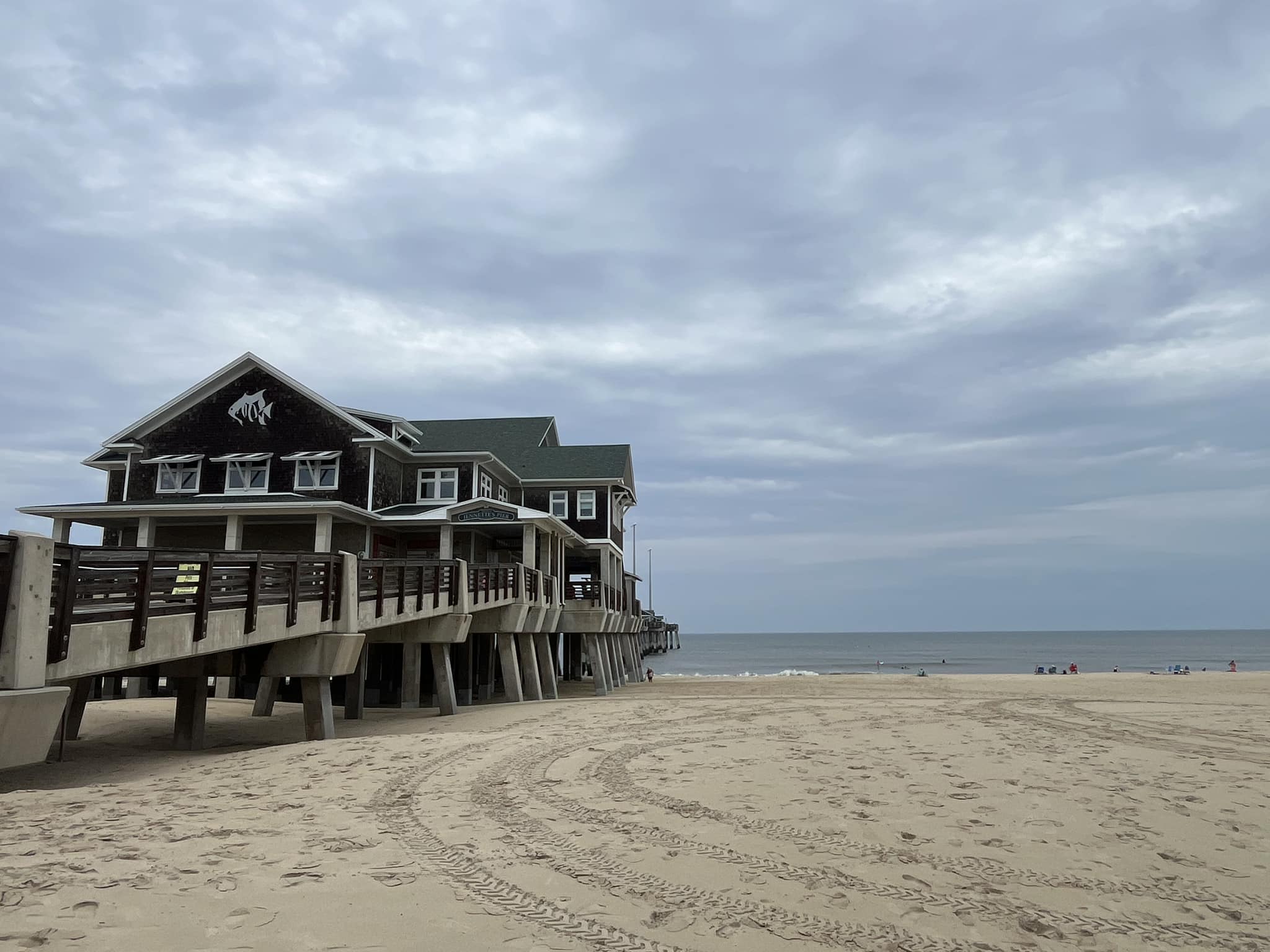


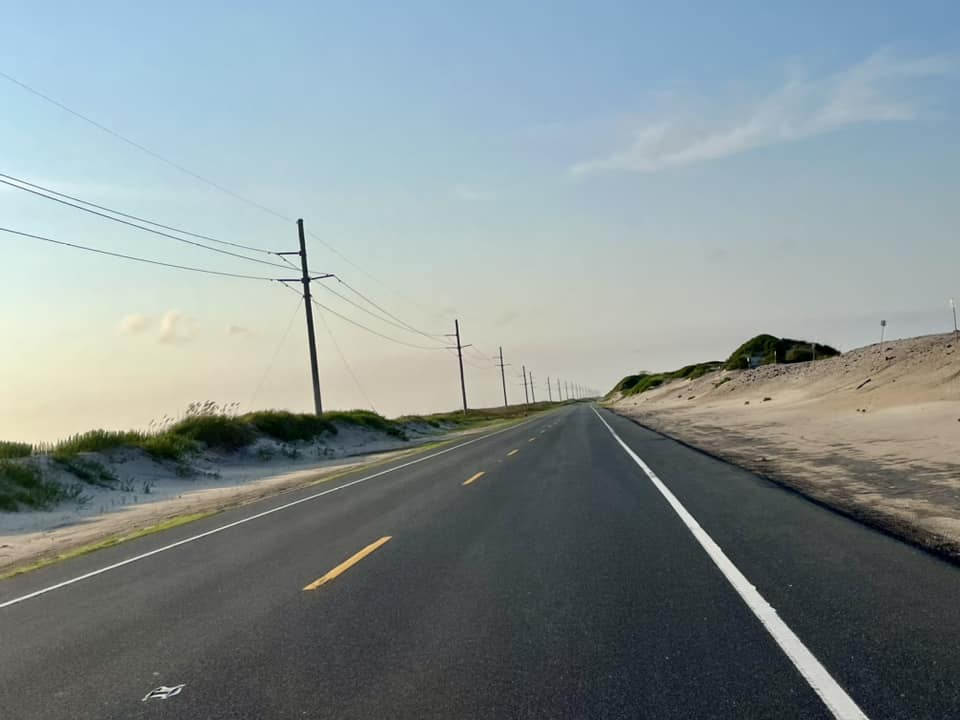











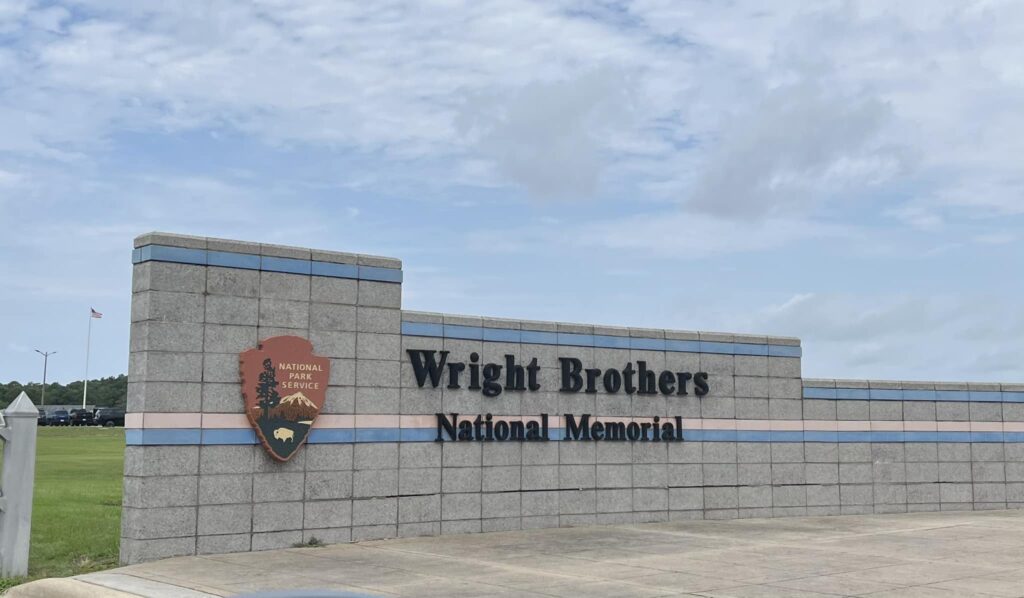
























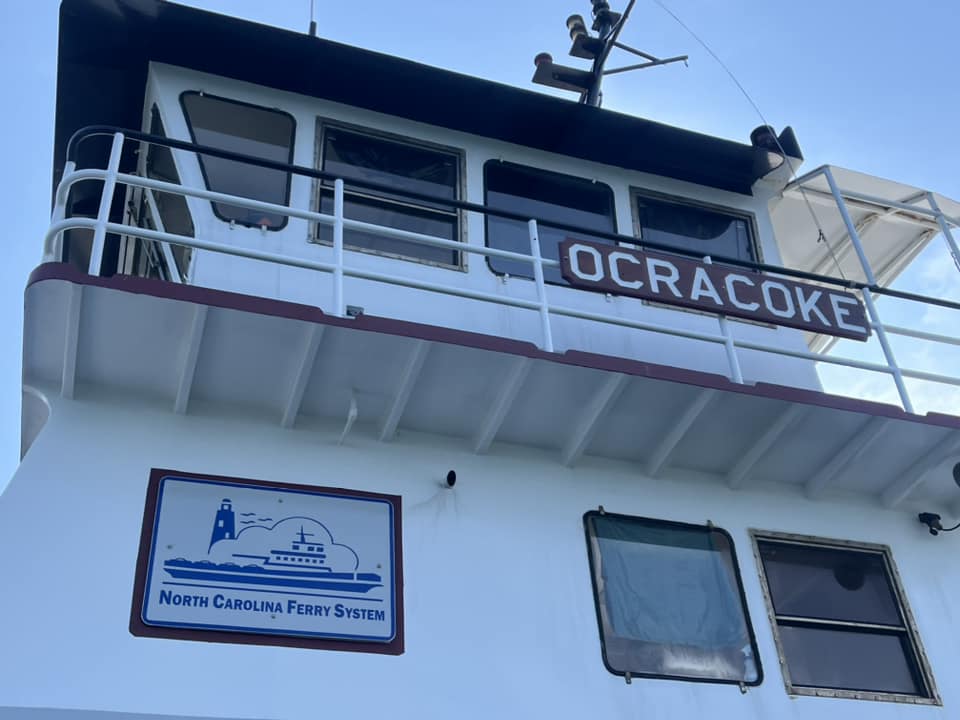
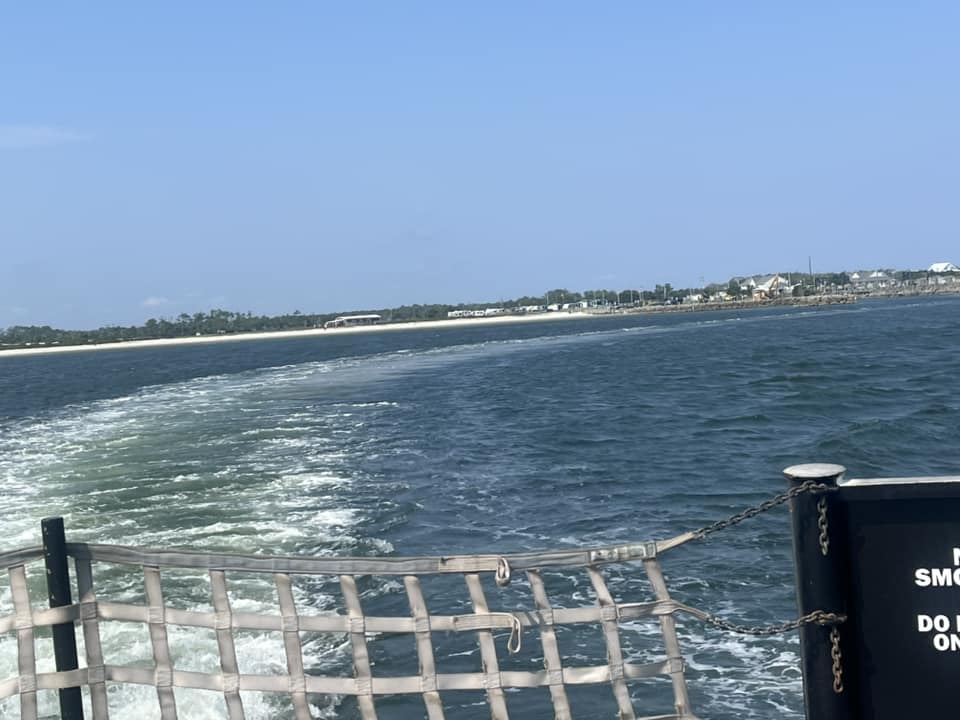












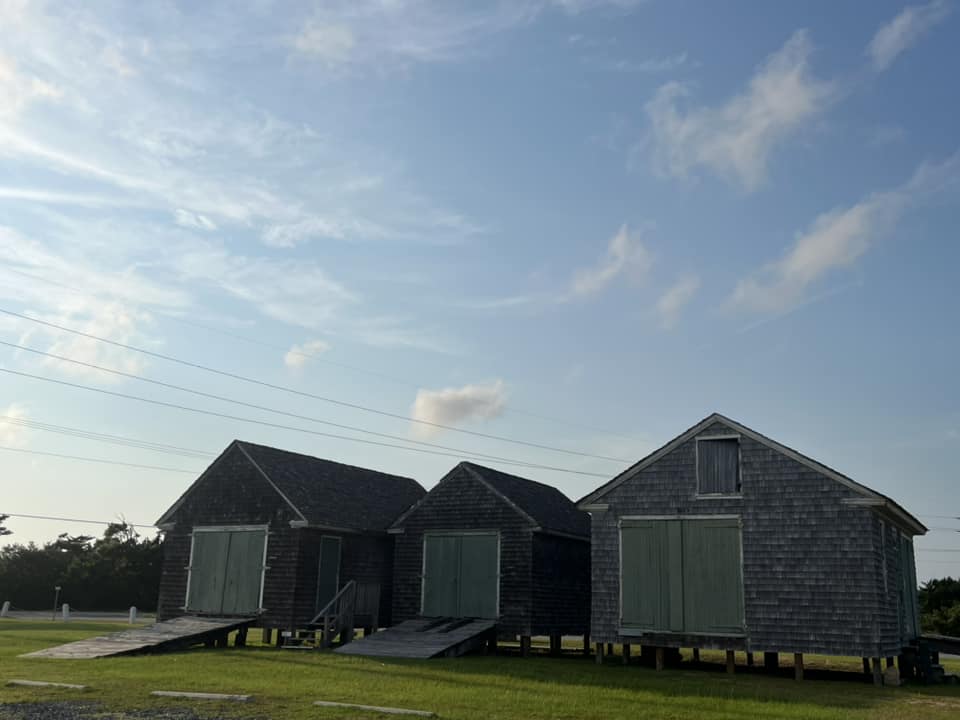















































































Leave a Reply